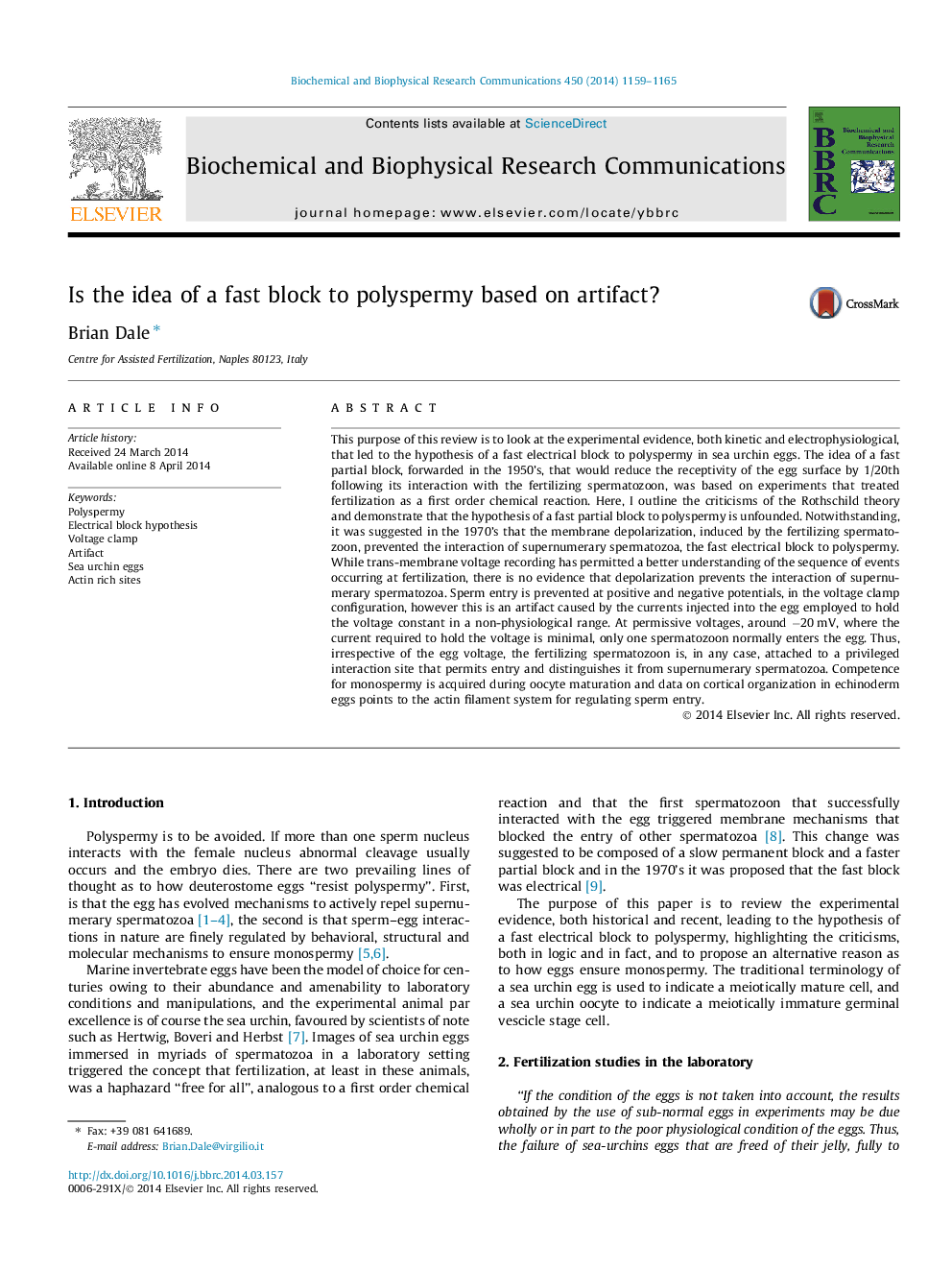| کد مقاله | کد نشریه | سال انتشار | مقاله انگلیسی | نسخه تمام متن |
|---|---|---|---|---|
| 1928479 | 1050360 | 2014 | 7 صفحه PDF | دانلود رایگان |

• This review opens a debate as to how sea urchin eggs ensure monospermy.
• The hypothesis of a fast electrical block to polyspermy is refuted.
• The experiments used to promote the hypothesis are reviewed and criticized.
• The kinetic data is unfounded while the electrical data is artifactual.
• Sperm entry may be regulated by predetermined actin-rich sites.
This purpose of this review is to look at the experimental evidence, both kinetic and electrophysiological, that led to the hypothesis of a fast electrical block to polyspermy in sea urchin eggs. The idea of a fast partial block, forwarded in the 1950’s, that would reduce the receptivity of the egg surface by 1/20th following its interaction with the fertilizing spermatozoon, was based on experiments that treated fertilization as a first order chemical reaction. Here, I outline the criticisms of the Rothschild theory and demonstrate that the hypothesis of a fast partial block to polyspermy is unfounded. Notwithstanding, it was suggested in the 1970’s that the membrane depolarization, induced by the fertilizing spermatozoon, prevented the interaction of supernumerary spermatozoa, the fast electrical block to polyspermy. While trans-membrane voltage recording has permitted a better understanding of the sequence of events occurring at fertilization, there is no evidence that depolarization prevents the interaction of supernumerary spermatozoa. Sperm entry is prevented at positive and negative potentials, in the voltage clamp configuration, however this is an artifact caused by the currents injected into the egg employed to hold the voltage constant in a non-physiological range. At permissive voltages, around −20 mV, where the current required to hold the voltage is minimal, only one spermatozoon normally enters the egg. Thus, irrespective of the egg voltage, the fertilizing spermatozoon is, in any case, attached to a privileged interaction site that permits entry and distinguishes it from supernumerary spermatozoa. Competence for monospermy is acquired during oocyte maturation and data on cortical organization in echinoderm eggs points to the actin filament system for regulating sperm entry.
Journal: Biochemical and Biophysical Research Communications - Volume 450, Issue 3, 1 August 2014, Pages 1159–1165